Choosing a visualization#
When choosing a visualization, it is recommended to always begin by looking at a hillshade of the area under investigation. Hillshading provides the most ‘natural’ visual appearance of the topography and can help you decide which other techniques could work well.
See also
Find out more about the visualizations that RVT can produce in List of visualizations.
By feature type#
If you need some help to get started after trying a hillshade, consider the type of feature you’re working with:
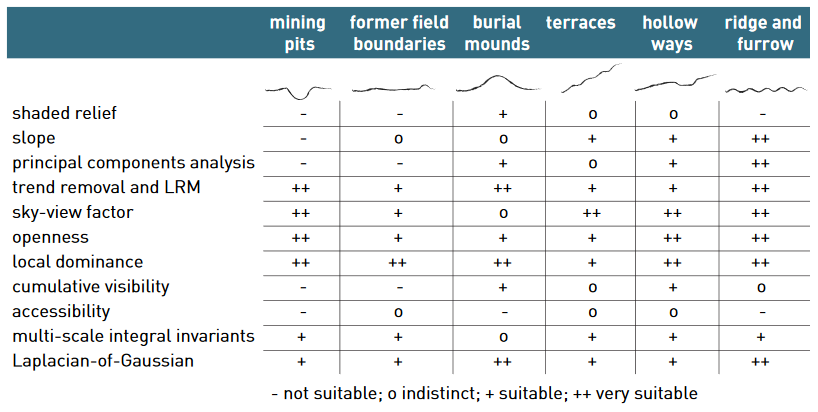
Table 1: Suitability of visualisation techniques for representing selected archaeological topographical features.
By topography type#
You can also try adding techniques from Table 2, in order from left to right, based on the topography of the area under investigation.

Table 2: Matrix for the suitability of visualisation techniques for selected archaeological relief features in different topographic settings.
See below for visual examples of the methods suggested in Table 2.
Flat terrain#
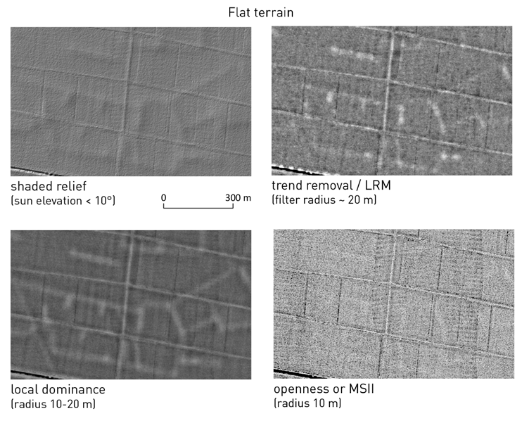
Gentle slopes#
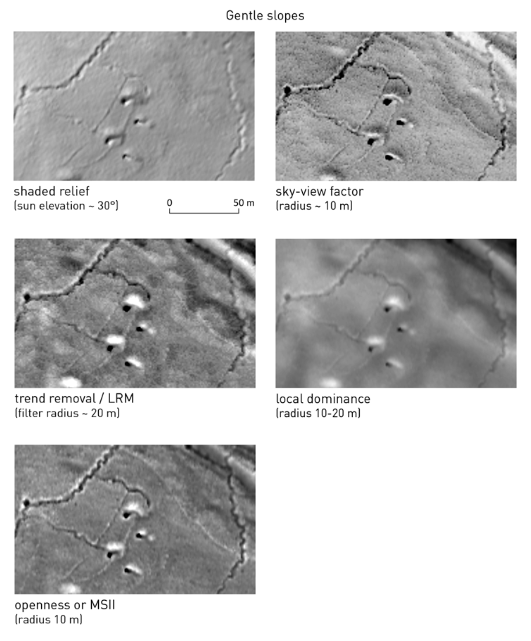
Moderate slopes#
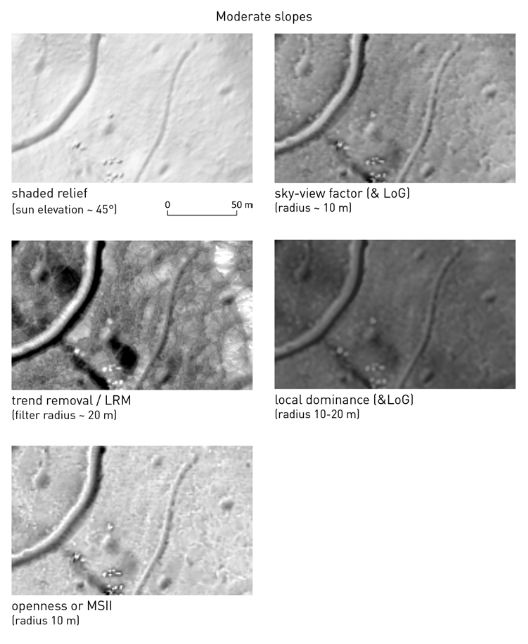
Steep slopes or complex topography#
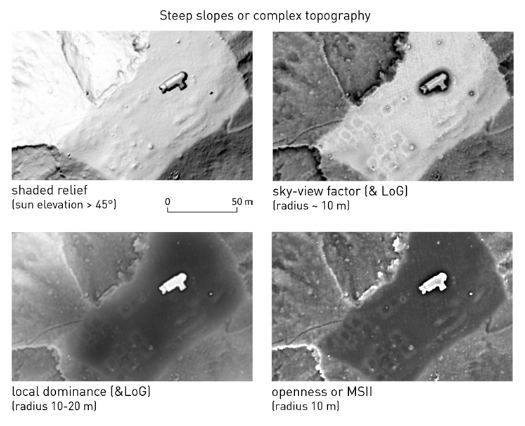
See also
Find out more about choosing visualizations in Kokalj, Žiga, Ralf Hesse. 2017. Airborne laser scanning raster data visualization: A Guide to Good Practice. Ljubljana: Založba ZRC.